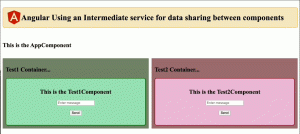Angular: The many faces of the Template Variable Syntax – a cheat sheet
Angular uses special syntaxes that allow communication between the component code (Typescript class) and its HTML template. You will find this post to be quite useful as a quick reference for various options Angular offers us when we work on templates of the components.










